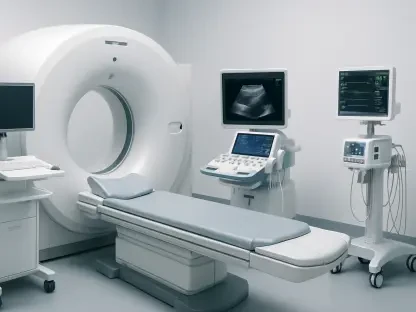The U.S. Centers for Medicare and Medicaid Services (CMS) has unveiled a proposed rule for the 2026 Physician Fee Schedule (PFS) and Quality Payment Program (QPP), igniting intense debate and apprehension within the healthcare sector over its potential effects. This rule, designed to reshape reimbursement structures and quality reporting mechanisms, has stirred unease among medical professionals who fear it could undermine the stability of their practices. With provisions ranging from efficiency-driven payment cuts to new reporting frameworks, the proposal has sparked questions about whether it will streamline operations or create unintended challenges. Medical societies, including the American College of Radiology (ACR) and the Medical Group Management Association (MGMA), have been vocal in their criticism, highlighting potential financial strain and disruptions to patient care. This article explores the key elements of the proposed changes, delving into the concerns raised by stakeholders and the broader implications for medical practices across various specialties.
Financial Adjustments Under Scrutiny
The CMS 2026 proposal introduces a significant 2.5% reduction in work relative value units (RVUs) for over 7,000 non-time-based medical service codes, an “efficiency adjustment” that CMS projects will result in a 1% payment decrease across most specialties. This measure, intended to curb costs, has drawn sharp criticism from prominent medical groups like the ACR and MGMA, who argue it fails to reflect the nuanced demands of clinical work. Factors such as increasing case complexity, after-hours responsibilities, and rising operational expenses are overlooked in this broad cut, raising fears that practices already stretched thin by prior reductions will struggle to maintain financial viability. The Radiology Business Management Association (RBMA) has labeled the adjustment as arbitrary, suggesting it misapplies economic productivity models to healthcare settings where patient outcomes, not just efficiency, must remain the priority. This disconnect between policy intent and practical impact has fueled widespread concern.
Beyond the immediate financial hit, the efficiency adjustment threatens to exacerbate existing challenges within the healthcare landscape, particularly for specialties like radiology that rely on specialized equipment and skilled personnel. Many stakeholders worry that smaller practices or those in underserved areas could face disproportionate burdens, potentially leading to staff cuts or reduced service offerings. The consensus among critics is that while cost-saving measures are necessary, they must be tailored to account for the diverse realities of medical practice rather than applied as a one-size-fits-all solution. The RBMA and others have called for CMS to reconsider this approach, advocating for a more detailed analysis of how such reductions affect different fields. Without adjustments, there’s a tangible risk that the drive for efficiency could compromise the quality and accessibility of care, leaving both providers and patients to bear the consequences of a policy that may look effective on paper but falters in execution.
Reimbursement Updates Raise Mixed Reactions
Another cornerstone of the CMS 2026 rule is the revision of conversion factors for reimbursement, aligned with the Medicare Access and CHIP Reauthorization Act (MACRA), offering a 0.75% increase for Alternative Payment Model (APM) participants and a 0.25% rise for non-APM participants. These translate to rates of $33.59 and $33.42 respectively, up from the current benchmark of $32.34. On the surface, these increments appear to provide some relief, yet medical societies argue they fall short of addressing the cumulative impact of previous cuts and future budget neutrality constraints. The MGMA has emphasized that these modest boosts do little to alleviate the long-term financial pressures facing practices, especially when inflation and operational costs continue to climb. For many, the updates represent a small step forward but not a sustainable solution to the broader reimbursement challenges.
Specific specialties, such as radiation oncology, face additional hurdles with proposed coding changes that could further erode their reimbursement rates, according to the American Society for Radiation Oncology (ASTRO). Such reductions might discourage investment in critical areas like cutting-edge technology, research initiatives, and adequate staffing, all of which are essential for maintaining high standards of patient care. ASTRO and other groups are urging CMS to provide clearer guidance on APM participation, enabling more physicians to access the higher conversion factor and mitigate some of these losses. The overarching sentiment is that while the reimbursement updates offer a slight buffer, they fail to tackle the deeper structural issues within Medicare payment systems. Without more comprehensive reforms, practices may continue to grapple with financial instability, potentially impacting their ability to serve patients effectively.
Quality Reporting Frameworks Stir Debate
The introduction of six new MIPS Value Pathways (MVPs) under the CMS 2026 rule, including pathways for diagnostic and interventional radiology, aims to simplify quality reporting by reducing the number of required measures and promoting cost-effective, high-quality care. CMS positions this as a progressive move to alleviate administrative burdens on providers, yet the reception from the medical community remains lukewarm. The Society of Interventional Radiology (SIR) has expressed strong opposition to the inclusion of their specialty in the MVP framework, arguing that it does not adequately reflect the diverse practice patterns and unique challenges they face. Developing measures for MVPs also comes with significant costs, often running into substantial figures per measure, which could strain resources for many practices already navigating tight budgets.
Further complicating the issue, experts point out that success within the MVP framework often depends on a practice’s existing performance under traditional MIPS measures, a hurdle for those dealing with increasing imaging volumes and extensive documentation demands. Rather than streamlining processes, there’s a concern that MVPs might introduce additional layers of complexity, particularly for specialties with non-standard workflows. The broader worry is that these reporting changes, though well-intentioned, could divert time and resources away from direct patient care, forcing providers to prioritize compliance over clinical priorities. Stakeholders are pressing CMS to refine the MVP design, ensuring it genuinely reduces administrative overhead while aligning with the practical needs of diverse medical fields. Without such adjustments, the framework risks becoming another regulatory burden rather than a tool for improvement.
Patient Care and Access in Jeopardy
Among the most pressing concerns surrounding the CMS 2026 rule is its potential to disrupt patient care and access to essential services, a theme echoed across various medical societies. The RBMA warns that the combined effect of financial cuts and regulatory pressures could intensify existing shortages of radiologists, particularly in rural or underserved regions, limiting Medicare beneficiaries’ ability to receive timely imaging and diagnostic services. Such workforce challenges, compounded by reduced payments, might force practices to scale back operations or delay investments in critical infrastructure, creating a ripple effect that impacts the broader healthcare ecosystem. The fear is that cost-saving measures could inadvertently prioritize fiscal outcomes over the fundamental goal of ensuring equitable access to care for all patients.
Similarly, ASTRO has highlighted how reimbursement cuts in radiation oncology could constrain resources for innovative treatments, adequate staffing, and advanced equipment, all of which are vital for delivering effective cancer care. The overarching anxiety is that practices, under mounting financial and administrative strain, may be compelled to make difficult choices between maintaining quality and cutting costs, potentially reducing the availability of specialized services. This could disproportionately affect vulnerable populations who rely on Medicare for access to life-saving treatments. Medical societies are advocating for CMS to consider these downstream effects, emphasizing that any policy changes must safeguard patient well-being as a core priority. The stakes are high, as the balance between efficiency and care quality remains a delicate one that requires careful calibration.
Balancing Policy Goals with Practical Realities
Reflecting on the CMS 2026 proposed rule, it’s evident that while the intent was to modernize reimbursement and reporting systems, the execution has sparked significant backlash from the medical community over its potential to destabilize practices. Medical societies and experts stand united in their critique of the efficiency adjustments and MVP frameworks, cautioning against the financial and administrative burdens that have emerged as unintended consequences. Their advocacy focuses on urging CMS to revisit these elements, pushing for policies that mirror the complex realities of clinical environments rather than imposing broad, uniform cuts.
Looking ahead, the path forward hinges on collaborative dialogue between CMS and stakeholders to refine these proposals into a framework that harmonizes efficiency with the needs of providers and patients. Medical groups have already taken proactive steps, such as developing specialty-specific models and registries, to align with value-based care goals. The challenge now lies in ensuring that future iterations of the rule incorporate these insights, prioritizing sustainable reimbursement structures and streamlined reporting without sacrificing access to high-quality care. Only through such partnership can the healthcare system navigate these changes effectively.









